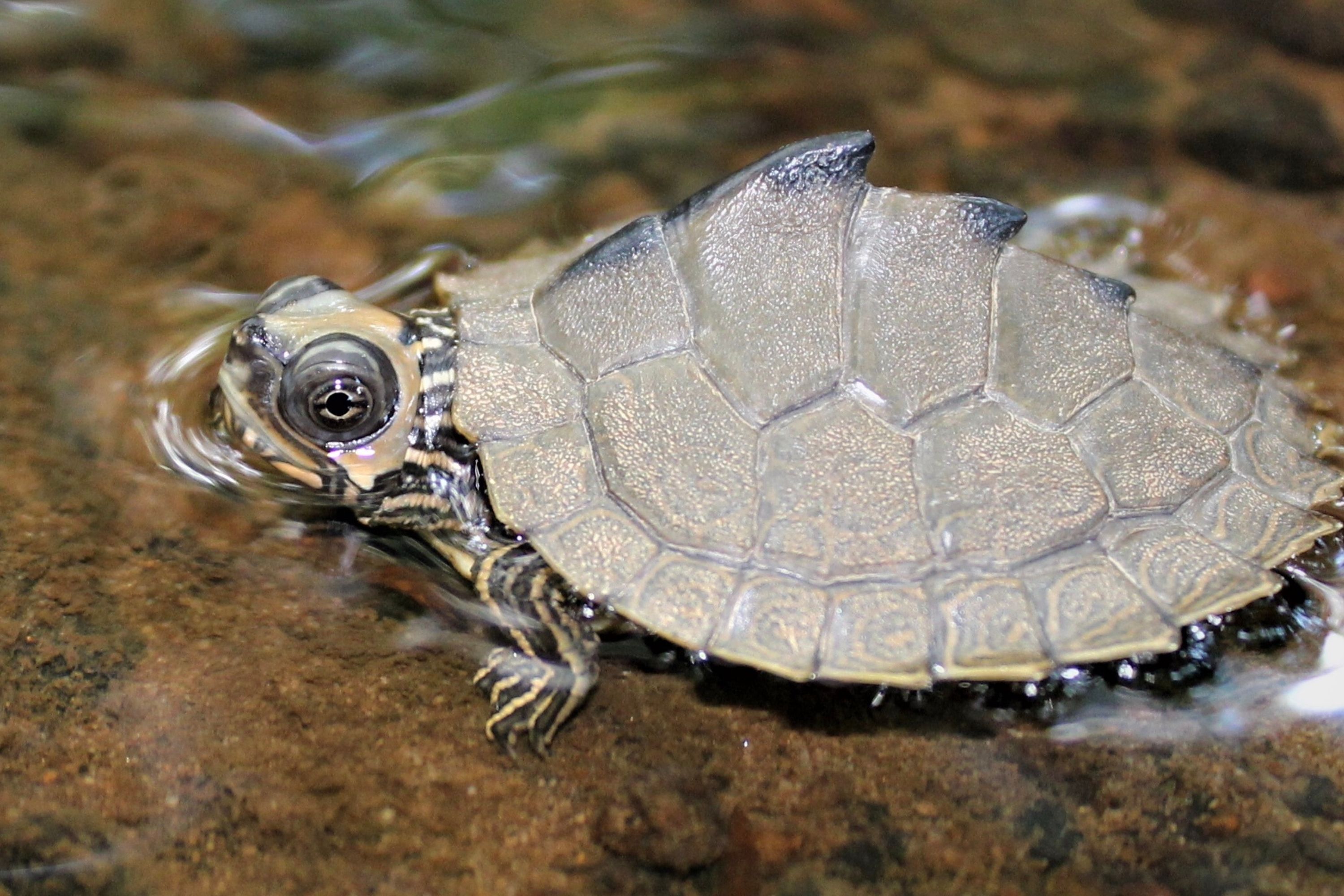Alabama map turtle
(Graptemys pulchra)

Description
The Alabama map turtle (Graptemys pulchra) is a species of emydid turtle endemic to the southern United States. Differentiation from other turtle species includes a black stripe running down the center of its back with knobs extruding from it, but these projections wear down with age. T.H. Bean and L. Kumlen first collected the Alabama map turtle in July 1876 from a lake near Montgomery, Alabama. Type locality for this species is Montgomery County, Alabama. Baur described and named the Alabama map turtle in 1893. The genus Graptemys includes nine species of mostly aquatic turtles. Nine species of Graptemys turtle could allow confusion in distinguishing it from other species in the same genus. A few key diagnostic features set the Alabama map turtle apart. The black stripe down the center of its back with knobs extruding from it is a diagnostic characteristic for this species that separates it from other turtle species. Adult males range from 9.0–12.7 cm (3.5–5.0 in) and retain most coloration and pattern from its juvenile stage. Females range from 18.0–29.2 cm (7.1–11.5 in), have extremely large heads for crushing snails and mollusks, and lose a majority of their markings and patterns, becoming drabber than juveniles and males. Carapace (upper half of shell) color can be olive to dull green with a slightly visible black stripe in adults. Juveniles exhibit a dark stripe running down a more olive carapace. The outermost edge on the upper half of the shell usually contains light reticulate markings and the scutes (scale-like structure) contain a yellowish bar or semicircle. Dark rings are usually present on the lower surface of each outer scute. It contains a hingeless yellow plastron (bottom half of shell) notched in the back. A narrow black margin borders the edge of each scute. It has a brown to olive head with a large mark that ranges from light green to yellow located between and behind the eyes. The lateral and dorsal head stripes can be continuous or separated. Chin stripes are found transversally and/or longitudinally. The feet are webbed with a striped tail and limbs. Growth rate is rapid in juveniles, but slows promptly at maturity. Females reach full size around 23 years old and can live 50 years or more in natural conditions. Females have significantly larger jaws, while males have long and thick tails with vents past the edge of the carapaces.
Taxonomic tree:







